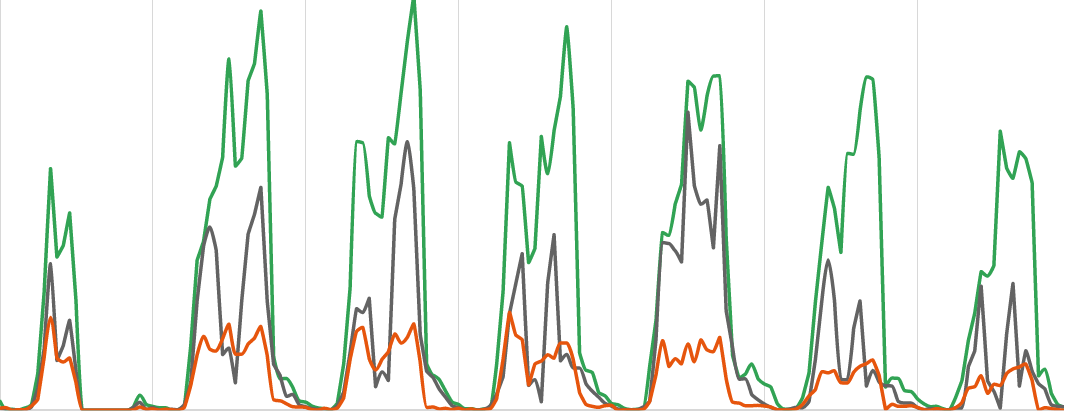
Planning and Prioritization
The Local Access Score can inform complete streets prioritization plans or pedestrian and bike plans by identifying locations in need of improvement.
Communities across Massachusetts are looking for ways to make walking and biking a safer, healthier, and more convenient way to get around. There is a growing movement toward the creation of “Complete Streets” designed to accommodate travelers of all ages, incomes, and abilities, whether they are walking, biking, riding transit, or in a car. As of June 2016, nearly one-fifth of the municipalities in Massachusetts have adopted Complete Streets policies and are participating in a Massachusetts Department of Transportation (MassDOT) program to implement those policies through capital investments. Given the urgent need and limited funds, it is critical for municipalities to focus and prioritize their investments where they will have the biggest impacts on safety, convenience, and congestion relief.
While it is clear that investments should be made where they can benefit the greatest number of users, there are few measures of active transportation utility for any given stretch of road. As in, if this were a good place to walk or bike, would many people find it a useful route between point A and point B?
Local Access is a tool developed to help answer this question. This measure provides a robust, quantitative estimate of current or potential roadway utility for walkers and bikers. The active transportation network utility score for each segment of roadway indicates how useful that street segment is for connecting residents with schools, shops, restaurants, parks, and transit stations.

The Local Access Score can inform complete streets prioritization plans or pedestrian and bike plans by identifying locations in need of improvement.

Field investigation or documentation of local pedestrian conditions should focus on high-utility roadway segments likely to be used by the largest number of local residents.

The Local Access Score can be used to inform operational plans for snow clearance, vegetation management, or routine repair, and to prioritize code enforcement.

The Local Access Score can be used to screen the projects & possibly eliminate those likely to serve a relatively small number of users.

Wayfinding programs can use the data to place signs where many people will pass, or at key intersections where walkers might be redirected to a recommended pedestrian route.

The Local Access Score can be used to identify groupings of count locations that are representative of an entire municipality or study area.
The Local Access Score is calculated using travel demand software that uses input data on population and destinations to estimate the number of trips households are likely to make in a given day, the likely destinations of those trips, and the most direct routes connecting households to their destinations. The dataset contains a separate score for four different types of destinations (school, shops and restaurants, transit stations, and parks) and two different modes (walking and biking), for a total of eight basic scores. These scores are combined and weighted to produce walking and biking scores as well as an overall composite score.
Local Access Scores are available via an interactive online map and as a downloadable dataset that can be viewed and customized using GIS software. Follow the download link below to get the data; you will be prompted to provide your name and email address so we can provide you with updates when they become available. The User Guide provides a complete data dictionary and tips on working with the data.

Do you need help interpreting Local Access Scores or developing a pedestrian prioritization plan? MAPC provides technical assistance to cities and towns working to create complete streets. We can assist you with planning, assessment, and public engagement related to pedestrian and bike planning. MAPC can also customize the model to incorporate detailed local information about unmapped or informal pedestrian routes, sidewalk availability, or key destinations. Contact us to learn more.